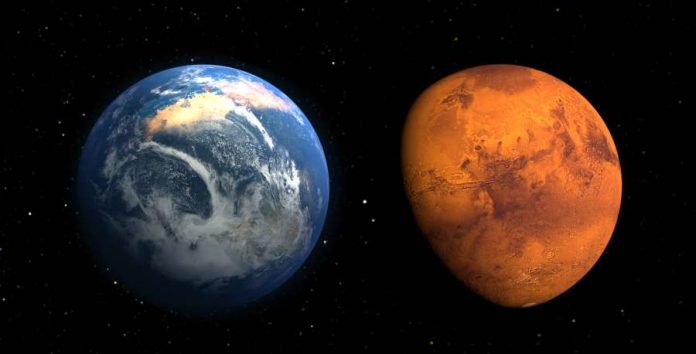
Data collected from the Curiosity rover suggest Mars was capable of sustaining life in the past for periods that could span tens or hundreds of millions of years. Curiosity studied many land formations that draw scientists towards this conclusion.
The rover’s observations into Martian geology point out to materials that could have been part of a potentially habitable system of lakes and streams. The robot compared these findings, made in the Gale Crater area, with others taken from the foothills of Mount Sharp.
The robot compared these findings, made in the Gale Crater area, with others taken from the foothills of Mount Sharp.
Water on Mars, according to Curiosity’s analysis, was initially fresh and PH-neutral, something that changed over time but still harbored the possibility of long periods of microbial life.
I'm reading you like a book, #Mars. The layers of Mt Sharp show mounting evidence of the Red Planet's habitable past https://t.co/o8qhIjqx5a pic.twitter.com/BHypRtrR8c
— ARCHIVED – Curiosity Rover (@MarsCuriosity) December 13, 2016
Further studies are currently in the hands of John Grotzinger, a geologist at the California Institute of Technology (Caltech) in Pasadena.
NASA does not fully trust SpaceX rockets
Earlier today, Agency officials from NASA stated the science equipment provided by them would not be aboard the spacecraft designed for the first SpaceX Mars mission, scheduled for launch in early 2018.
NASA will wait until the SpaceX crew completes a successful landing on the Red Planet before entrusting them with their data collection instruments which are extremely delicate. NASA’s science gear is currently worth millions of dollars.
The leader of the Agency’s Planetary Science Division, Jim Green, remarked he wanted “to wait this one out,” at the annual fall meeting of the American Geophysical Union.

NASA’s decision is understandable given the latest events, including the now confirmed crash of the Schiaparelli spacecraft on the surface of Mars.
The Tesla-backed “Red Dragon” mission could hit Mars in less than two years
SpaceX will begin to launch uncrewed ‘Red Dragon’ ships to the Red Planet soon, according to founder and CEO Elon Musk. The company is currently the biggest advocate for Mars colonization and commercial flights outside the atmosphere.
One of the problems regarding Mars voyages is the Earth only comes close enough to the Red Planet once every 26 months when their orbits converge.
SpaceX’s plans are to begin testing the transport of heavy payloads to the Red Planet’s surface as potential human settlements become more and more plausible.
NASA will take part in these missions once the privately-owned company can prove their operations pose no risk whatsoever to equipment or crew.
Source: Space.com











